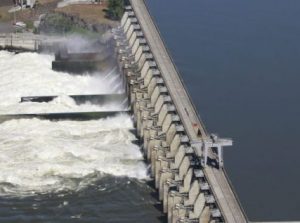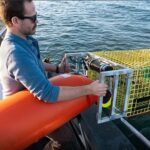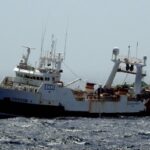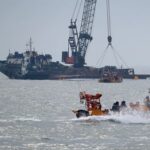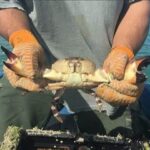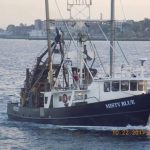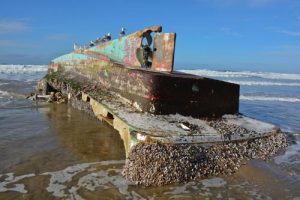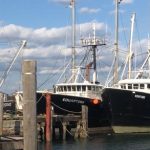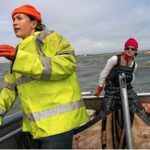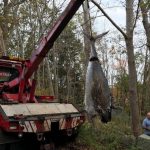Tag Archives: Columbia River
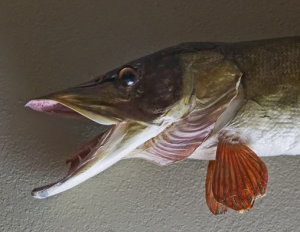
Last-ditch battle is underway to save Columbia River salmon, steelhead from determined predator
“In a lot of ways, the fight to save the Columbia River as we know it is going to be won and lost on Lake Roosevelt.” The enemy: northern pike.,,, The aggressive fish with razor-like teeth ended up in the Pend Oreille River sometime in the past decade – and kept going. This is bad news for the Columbia River’s salmon, trout, steelhead and other fish. Because the northern pike are big, determined predators. They’ll eat anything they can, including ducks. >click to read<11:00
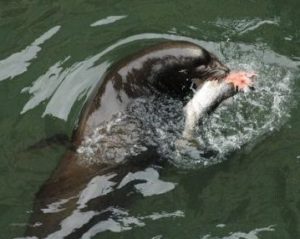
Salmon-eating sea lions targeted at Columbia River dam
More California sea lions preying on imperiled salmon in the Columbia River below a hydroelectric project on the Oregon-Washington border are being killed under a revised policy, federal authorities said Friday. The National Marine Fisheries Service made public reduced criteria for removing sea lions at Bonneville Dam about 145 miles (235 kilometers) from the Pacific Ocean. The new guidelines that went into effect April 17 permit any California sea lion seen in the area on five occasions or seen eating a fish to be put on a list for lethal removal. >click to read<10:57

Dismal Columbia River salmon forecast may trigger emergency fishing restrictions
Fishery managers in Washington and Oregon are concerned the spring and summer chinook salmons runs on the Columbia River are going to be one of the lowest on record. And the state agencies are calling for a meeting next week to consider emergency restrictions on commercial and recreational fishing along parts of the river. By Friday morning, 189 adult salmon had crossed over Bonneville Dam. That’s less than 8 percent of the 10-year average of 2,392 fish for the same date. >click to read<09:24
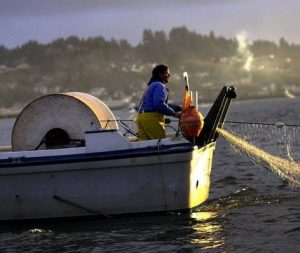
Commercial fishing isn’t the main threat to habitat
A recent letter wondered why Gov. Inslee would allow gillnetters on the Columbia River. The fact is, in the environment in which orcas struggle to survive commercial fishers are the easiest element to manage.,,, Gillnetters catch limited numbers of salmon. But land developers and homeowners can destroy an entire salmon run permanently. The pesticides, fertilizers, weed killers, moss removers, and deck waterproofing folks liberally use around the house and yard are absolute fish killers. Personal care products, pain medications, antidepressants and other popular pharmaceuticals are either disposed of or excreted into our sewage systems and flushed into the Salish Sea and Columbia River. >click to read< by Arthur Lynch, Bainbridge Island
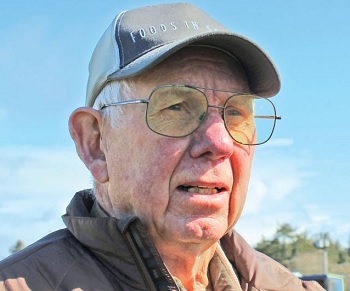
Chinook fisherman views life afloat as public service
Fishermen make good philosophers. Les Clark is no exception. “I have had a fantastic life,” said Clark, who turned 90 in December. “I had a lot of scrapes, but I survived all of them. All my buddies are gone. I wonder why I am still here. Maybe the good Lord needs me here to fight for the fish?” The concept of giving up his 32-foot F/V St. Frances II and not fishing solo doesn’t arise. “I am one of the older guys still on the river,” he said. His father Gene and Anna Clark of Chinook set the bar. “Dad fished till he was 90 and died at 98, and mom went to 97,” he smiled. >click to read<11:20
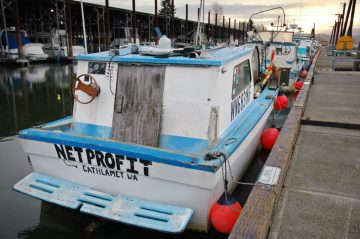
Columbia River Reforms – Change to gillnet policy stokes sport fishing anger
In a vote that has angered the sport fishing community, the Washington Fish and Wildlife Commission (WFWC) has voted to alter the Columbia River Salmon Policy 3620, known as the Columbia River Reforms, concerning the use of gillnets in the main stem Columbia River. The vote was held on March 2 in Spokane. The changes to the policy follow a five-year review, and recommendations from a joint-state task force that is composed of three commissioners from both states.,,, Hobe Kytr of Salmon For All, a commercial fishing advocacy group, sees the action as appropriate. “The policy that was enacted at the request of former Oregon Governor John Kitzaber has been a failure from the very beginning,” said Kytr. “It was a matter of putting a policy in place and then trying to find the scientific facts to back up the policy.” >click to read<11:30
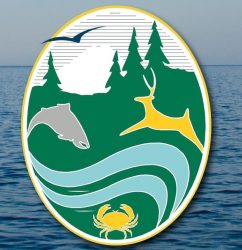
Options presented for Washington’s ocean salmon fisheries based on predictions
Fish managers released their options for Washington’s ocean salmon fisheries that reflect recent concerns over projected chinook stocks and optimism about improved returns of coho. Three options for ocean salmon fisheries were approved Tuesday for public review by the Pacific Fishery Management Council (PFMC). Kyle Adicks, salmon fisheries policy lead for the Washington Department of Fish and Wildlife says that the three alternatives are designed to protect the low numbers of chinook expected to return to the Columbia River and Washington’s ocean waters. >click to read<13:00
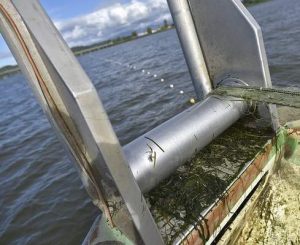
A major policy change – Washington State will allow gillnets in lower Columbia this fall
The Washington Fish and Wildlife Commission has agreed to allow the use of gillnets during the fall salmon fishery on the lower Columbia River while state fishery managers work with their Oregon counterparts to develop a joint, long-term policy for shared waters. The move is a major change in policy. Washington policy, approved in 2013, intended for the commercial fishery to have completed a transition from gillnets to alternative gear this year and be relocated away from mainstem Columbia River areas. However, the use of alternative gear has not yet been refined and the off-channel areas have been determined to be unsuitable. >click to read<10:05
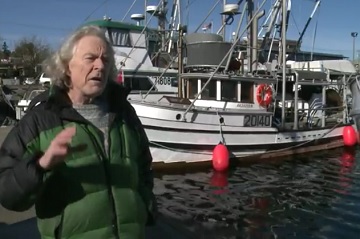
Salmon gill net fishing ban narrows focus to Columbia River
A push to ban non-tribal gill net fishing for salmon on the Columbia River is no shock to Pete Knutson, who has witnessed several similar attempts like it in his lifetime. “You can sell it to people who know nothing about the resource, and it sounds like a good idea,” Knutson said. Knutson owns Loki Fish Company, a business his entire family has helped build. It’s families like his that he’s worried about if the ban passes. “If you’re concerned about the resource, you want to keep those portions of the population that are living from the resource in business because they are the best stewards of the resource,” Knutson explained. >click to read<15:31
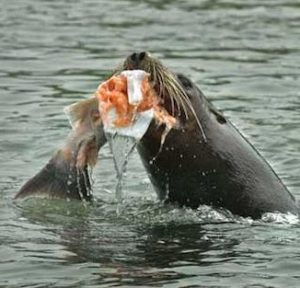
Sea lion bill signed into law by President Trump
Legislation that allows the lethal taking of sea lions that prey on at-risk fish populations on the Columbia River and select tributaries in Washington, Oregon and Idaho has been signed into law by President Donald Trump. The bipartisan bill, co-sponsored by Sen. James Risch, R-Idaho, and Sen. Maria Cantwell, D-Wash., makes slight changes to the Marine Mammal Protection Act of 1972, which lays out prohibitions for killing marine mammals, and institutes a permit process for the lethal taking of sea lions. Permit holders are legally allowed to kill sea lions that are part of a population and/or stock that is not classified as being depleted or at risk.>click to read<20:41
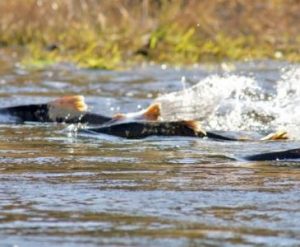
Northwest Dams to Spill More Water to Help Salmon & Orca
Dam operators will send more water spilling over the eight dams along the Snake and Columbia rivers in an effort to help young salmon survive the notoriously deadly trip to the Pacific Ocean. The spill management plan for 2019 and 2020 is a win for salmon advocates in a 17-year legal battle where federal judges have repeatedly told the government it’s not doing enough to prevent the extinction of salmon in the rivers of the Northwest. It also brings that litigation into alignment with the work of a Washington state task force determined to prevent the extinction of Southern resident killer whales whose survival depends on endangered Chinook salmon. >click to read<12:03

Congress passes bill that will allow killing of sea lions to help salmon
Congress has agreed to make it easier to kill sea lions threatening fragile runs of salmon in the Northwest. Oregon Public Broadcasting reports that a bill approved by the House Tuesday changes the Marine Mammal Protection Act to lift some of the restrictions on killing sea lions to protect salmon and steelhead in the Columbia River and its tributaries. The measure had previously passed the Senate. Wildlife managers say sea lion populations have grown so large that they no longer need all the protections that were put in place for them in 1972. >click to read<10:14

Orcas, fishermen are both endangered species
Orcas and commercial salmon fishermen share a common crisis — both need more adult Chinook salmon to return to the Columbia River; orcas to avoid starvation, fishermen to sustain their livelihoods and families. Northwest orcas are starving and their population is declining — only 74 remain, in large part because their primary prey, Chinook salmon, have been pushed by dams, dewatering and habitat destruction to near extinction almost everywhere.,, Salmon fishermen too are now effectively an endangered species, and for the same reasons as orcas — their Chinook salmon prey. <click to read<
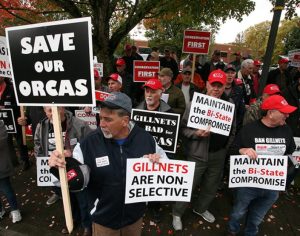
Feud over gill nets boils again
The Washington Fish and Wildlife Commission held a series of meetings at the Heathman Lodge in Vancouver from Thursday through Saturday to receive a report from state staff on the Columbia River Basin Salmon Management Policy C-3620, and review the results of that policy. During the Thursday meeting the WDWC was joined by the Oregon Fish and Wildlife Commission. While the commissions heard the report and reviewed possible options for the future of the policy, members of the Coastal Conservation Association (CCA) gathered outside the lodge to protest the prospect of the commission’s abandoning the policy entirely, which is one option being considered. >click to read<11:34
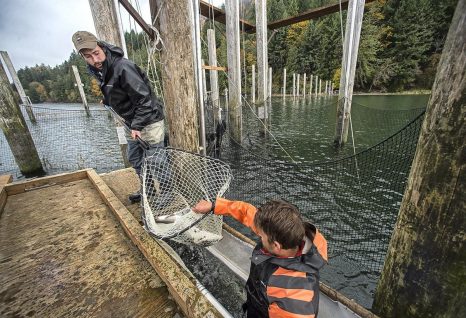
Columbia River commercial fishery could hinge on century-old method
A series of nets strung between pilings just off the Columbia River shore may offer a glimpse of the future of commercial fishing in the river, even though it harkens back to the fishing practices of a century ago. But some gillnetters say that the experimental fish trap, also known as a pound net, is just another unworkable idea for catching salmon that threatens their livelihoods. One morning last week, researchers from the Washington Department of Fish and Wildlife and the Wild Fish Conservancy worked the fish trap set in the Columbia a few miles upstream of Cathlamet, near Nassa Point. >click to read<09:34
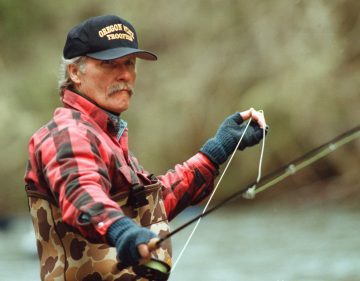
Kitzhaber re-emerges to back gillnet ban on the Columbia River
Former Gov. John Kitzhaber has re-emerged to champion a divisive plan he implemented to ban gillnets on the Columbia River — even as state fishery managers say the plan is not living up to expectations.,, Commercial fishermen argue gillnet gear is selective and does not unduly impact salmon runs, while sport fishing and conservation groups disagree. So far, neither state has come up with a replacement gear for gillnets, though Washington has continued to experiment with seine nets. >click to read<19:12

The Kitzhaber Plan – State compensation for gillnetters trickles down
Money local commercial salmon fishermen will soon receive as compensation after reform policies pushed them off the Columbia River is “not nothing.” But it’s not quite something, either. “It means a little bit of a paycheck,” said David Quashnick, a gillnetter who has been fishing since he was a teenager and now has two sons who run their own boats.,,, Recreational and salmon conservation groups said the changes would protect salmon. The commercial fishermen said it would destroy their way of life.,, In the past two years, a number of Oregon’s Fish and Wildlife commissioners say they now agree with the commercial fishermen. >click to read<10:57
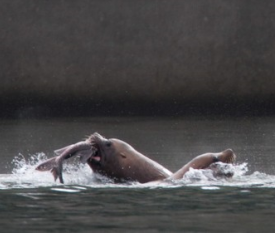
In their battle against sea lions, fish are losing – Support The Endangered Salmon and Fisheries Predation Protection Act
The tally doesn’t look good for steelhead and salmon on the Columbia River. Last year, sea lions devoured an estimated 9 percent of steelhead and 5 percent of spring chinook trying to make their way upstream past Bonneville Dam. Even more disconcerting, an estimated 24 percent of chinook disappeared between the mouth of the Columbia and the dam. In other words, there is a battle going on in the Columbia, and the sea lions are winning. That points out the need for Congress to pass a bill sponsored by Rep. Jaime Herrera Beutler, R-Battle Ground. >click to read<12:53
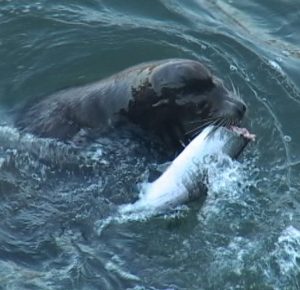
Save salmon; kill sea lions
Another spring, another much anticipated migration of “Kings of the Columbia,” our Pacific Northwest’s most revered salmonoid, the chinook salmon. Or perhaps not. At one-time chinook and their cousins migrated upstream by the hundreds of thousands. No longer. Salmon and steelhead are on the fast track to becoming endangered species. The Columbia River has its problems when considering fish migrations. The dams, commercial transportation, irrigation demands, you name it. These problems are solvable, but it will take time. There is now one glaring problem that can be simply and quickly resolved. >click to read<15:05
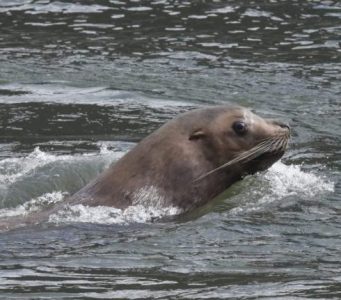
‘We’re losing’ sea lion fight – State, tribal, federal agencies back Herrera Beutler bill
The National Oceanic and Atmospheric Administration Fisheries division estimates about 45 percent of spring chinook salmon are lost between the mouth of the Columbia and Bonneville Dam, with sea lions being primarily responsible.,, For that reason, the Inter-Tribal Fish Commission is supporting legislation by Rep. Jaime Herrera Beutler, R-Battle Ground, and Kurt Schrader, D-Ore., titled the Endangered Salmon and Fisheries Predation Prevention Act. The bill would amend the Marine Mammal Protection Act of 1972 to make it easier for state and tribal wildlife managers to kill sea lions that predate salmon and steelhead and other fish in the Columbia River and its tributaries. >click to read<07:28
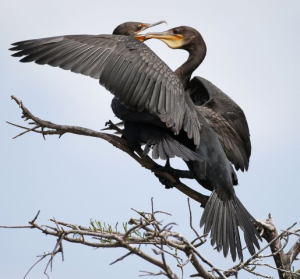
Corps of Engineers wants to remove 500 cormorant eggs to support salmon conservation in Columbia River
The Corps is in the fourth year of a five-year plan to cut the cormorant population on East Sand Island at the river’s mouth from more than 14,000 breeding pairs to no more than 5,380 to 5,939 birds to reduce pressure on fish listed under the federal Endangered Species Act. Double-crested cormorants are not listed under the federal Endangered Species Act but have federal protections under the Migratory Bird Treaty Act. The colony on the island at one point was believed to account for more than 40 percent of the entire Western population of the double,, >click to read<18:45

Letter: Predators prevent salmon, southern resident orca recovery
Seal and sea lion population explosions along the West Coast and particularly in our Salish Sea region have corresponded with the declines of salmon and steelhead runs. Per recent reports from the Puget Sound Institute, these mammals take six times as many Chinook as tribal, recreational and commercial fishers combined in Puget Sound alone. That doesn’t even include predation by birds, fish, whales and other animals.,, H.R. 2083 (the Endangered Salmon and Fisheries Predation Act) seeks further control of California sea lion populations in the Columbia River. >click to read< 10:24
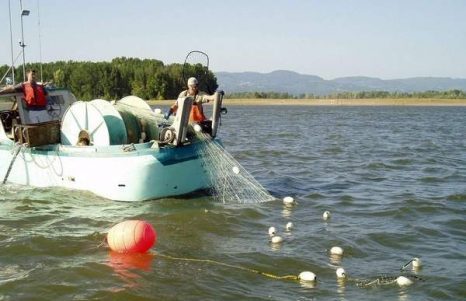
Despite frustration, observation plan yields new fish data
Gillnet fishermen bristled at a requirement to carry state observers last fall, but what felt like a burden to the fleet may have turned out to be a blessing. Preliminary data collected on the trips show that the number of steelhead fishermen kill while trying to catch other fish may actually be much lower than the historic rate. It’s good news for a fishery that has been under fire for using gear opponents say harms fish runs — and even better timing. Last year’s steelhead run was one of the worst returns in decades. >click here to read< 16:13
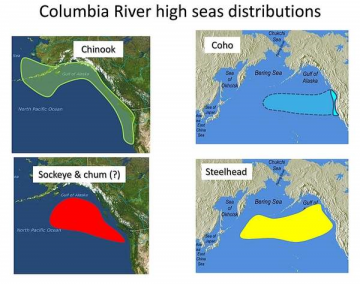
Ghost of ‘the Blob’ haunts Pacific salmon
The initial period after ocean entry for Columbia River basin juvenile salmon and steelhead is when most of the mortality occurs during their lives at sea, so ocean conditions — temperatures and nutrient supplies — during that period are critical to how many of the fish will return to the river as adults one to three years later. The path the fish take after they enter the ocean makes a difference, according Laurie Weitkamp of NOAA Fisheries’ Northwest Fisheries Science Center, Newport Field Station, especially lately with the “strange” ocean conditions. >click here to read< 10:31

Major Fight Shapes up Over Salmon Harvest in the Columbia River
Agreements that have reigned for a decade on how to divide the catch of salmon and steelhead in the Columbia Basin expire on the last day of 2017. The new plan is so contentious that multiple sides have promised to sue over it. What are the outrageous details? Same as the current ones. But the moment is a pressure point that allows old arguments to resurface. The current agreement, which expires at midnight on Dec. 31,,, click here to read the story 05:54
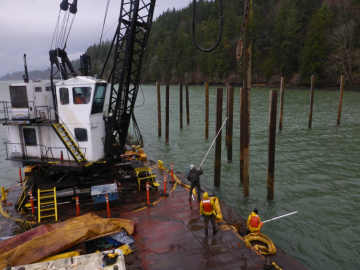
Current fishery situation is not sustainable – Kent Martin
I feel compelled to comment on the article in the Eagle (12/21/17) from the Columbia Basin Bulletin, “Group Tests Fish Trap above Cathlamet.” I attended the Wild Fish Conservancy presentation to the Washington Fish and Wildlife Commission and noted several inaccuracies, and the CBB added a few more. 1. Fish traps were never the “massive” harvest technology on the Columbia. They were outlawed in 1936 in Washington and 1948 in Oregon because many, if not most, were vertically integrated with the fish packers, and were being used to manipulate fish prices. I confronted one of the Wild Fish Conservancy people on this, and he admitted this was the case.,,, click here to read the story 10:43

Oregon Eyes Killing Sea Lions to Save Steelhead Trout
Fish managers scrambling to gain approval to kill dozens of California sea lions feasting on threatened winter steelhead trout got a bump this week from a study blaming the creatures for taking food from orcas. But some say the effort is a misguided attempt to scapegoat natural predators for the human-caused decline of their prey. In 1999, about 15,000 winter steelhead passed Willamette Falls. In 2016, scientists with the Oregon Department of Fish and Wildlife counted just 512.,, “We’re looking at a threat of extinction posed by sea lions,” Shaun Clements, the agency’s senior fish policy advisor, told the Fish and Wildlife Commission at a meeting in September. click here to read the story 08:04
Fish traps of past may help future of Columbia salmon
 The once-outlawed commercial fishing technique has been generating fresh interest in the face of declining wild salmon runs and might offer a less lethal way of handling wild salmon while harvesting hatchery fish for the consumer. Fish traps were once used broadly in the Northwest during the early part of the last century to harvest salmon for the canneries, but they were eventually outlawed because they caught too many fish.,, Jim Wells is a member of the lower Columbia River gill-net fleet, and after the conservation group published its findings on the traps he did a little bit of research. Using the catch data from the trap, he figured just how many sell-able fish they had caught during this last season. click here to read the story 14:52
The once-outlawed commercial fishing technique has been generating fresh interest in the face of declining wild salmon runs and might offer a less lethal way of handling wild salmon while harvesting hatchery fish for the consumer. Fish traps were once used broadly in the Northwest during the early part of the last century to harvest salmon for the canneries, but they were eventually outlawed because they caught too many fish.,, Jim Wells is a member of the lower Columbia River gill-net fleet, and after the conservation group published its findings on the traps he did a little bit of research. Using the catch data from the trap, he figured just how many sell-able fish they had caught during this last season. click here to read the story 14:52








